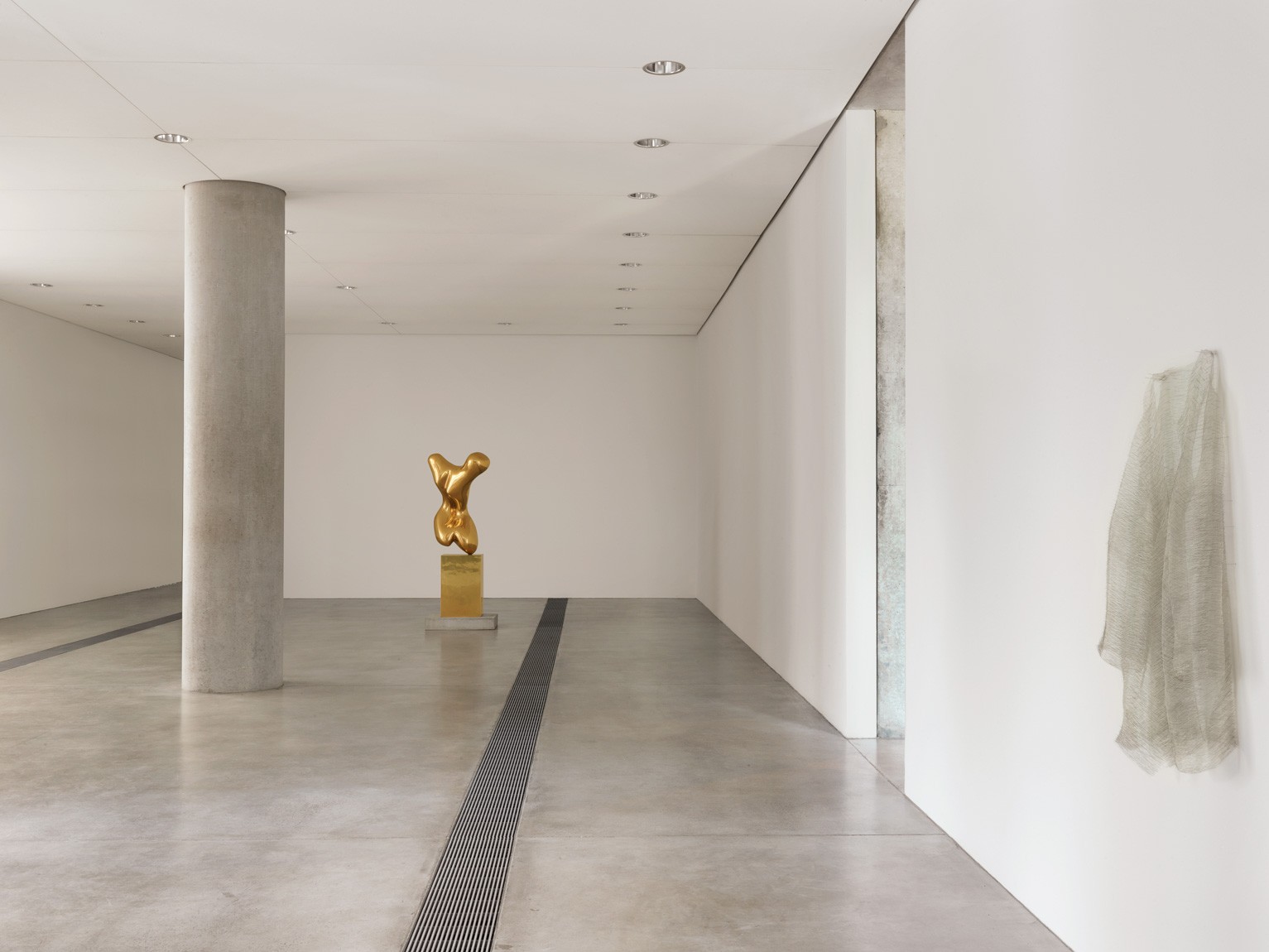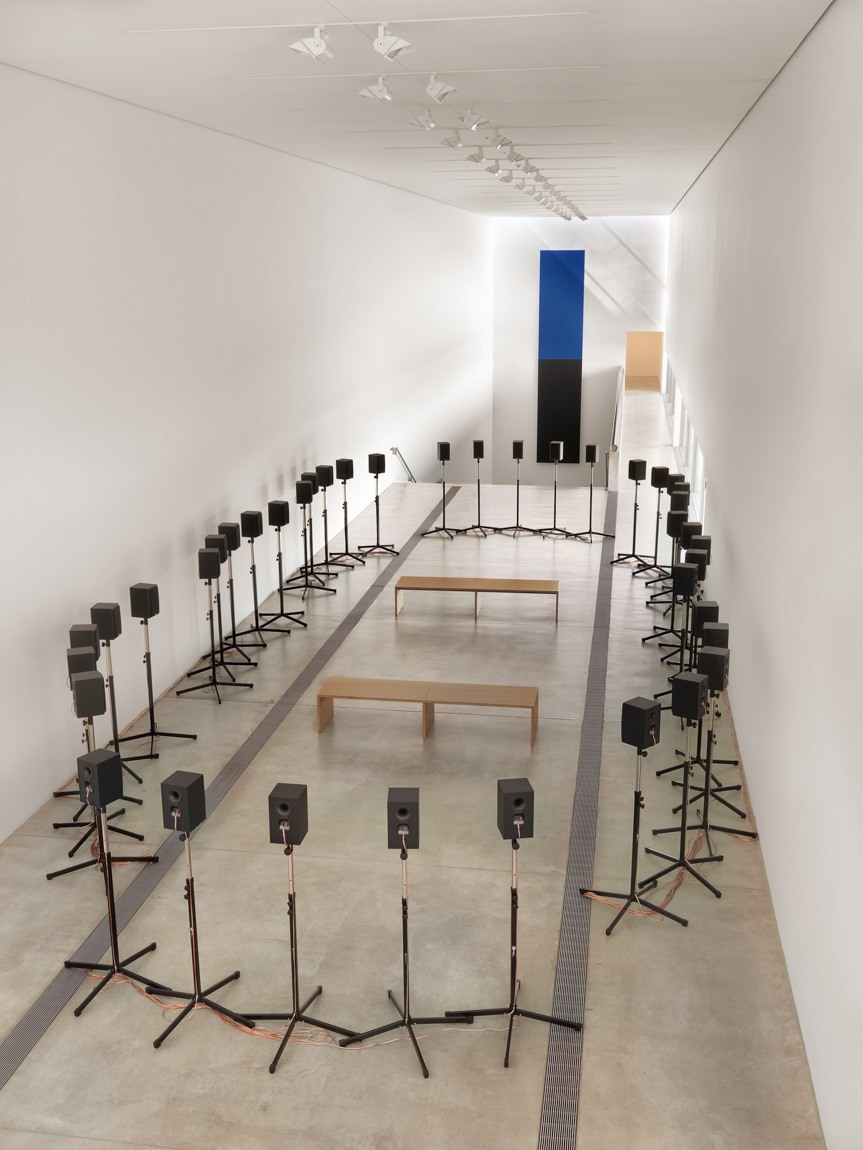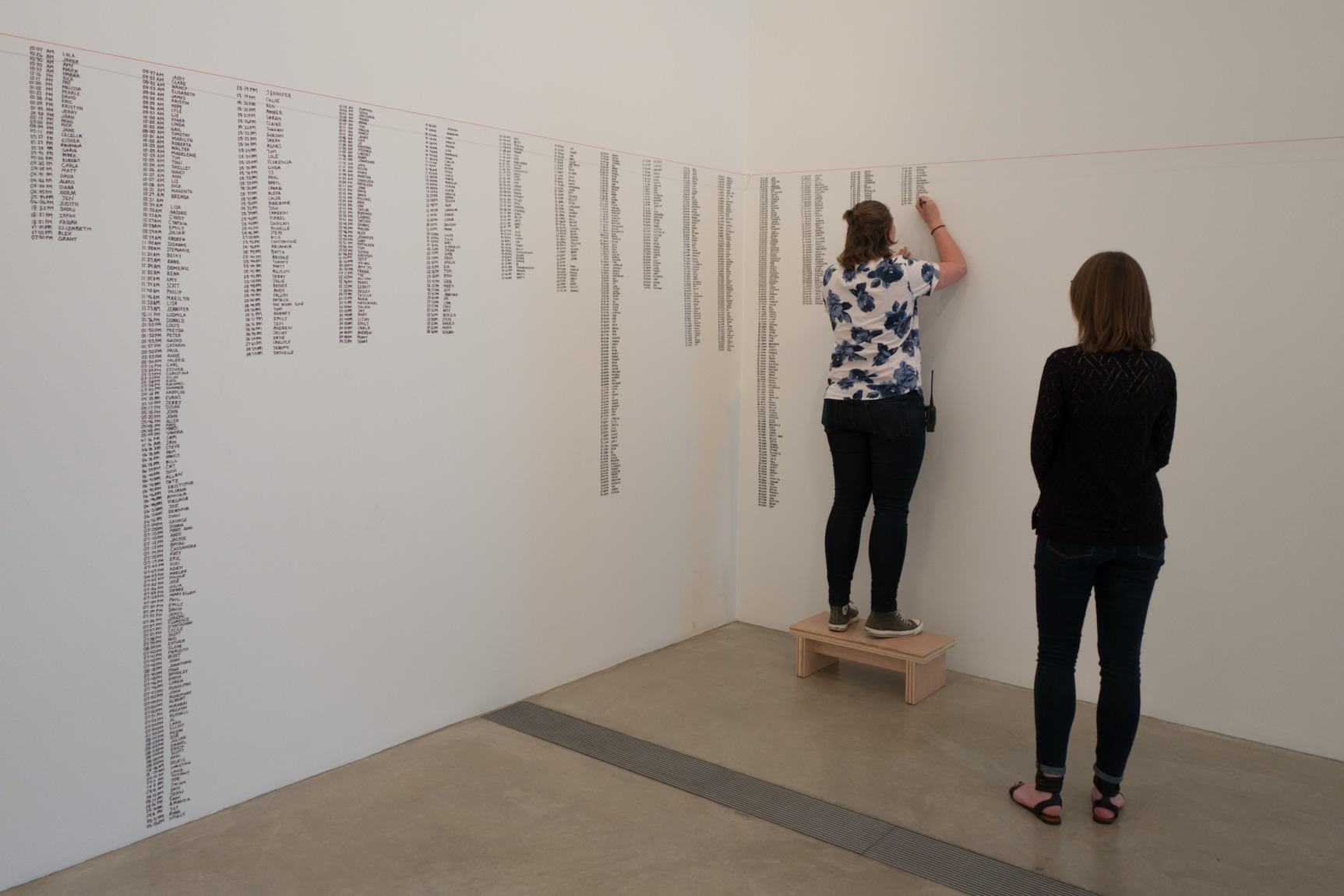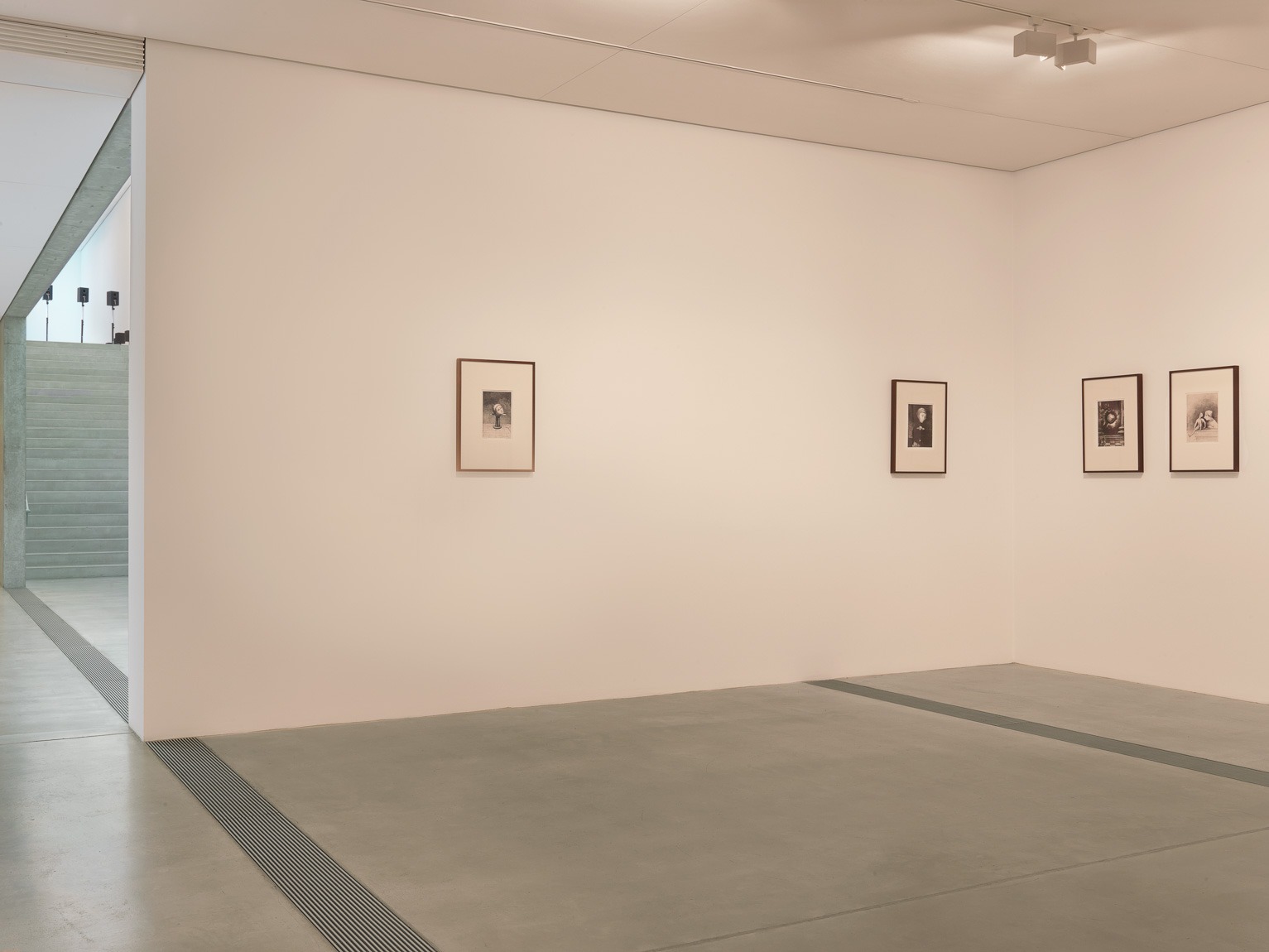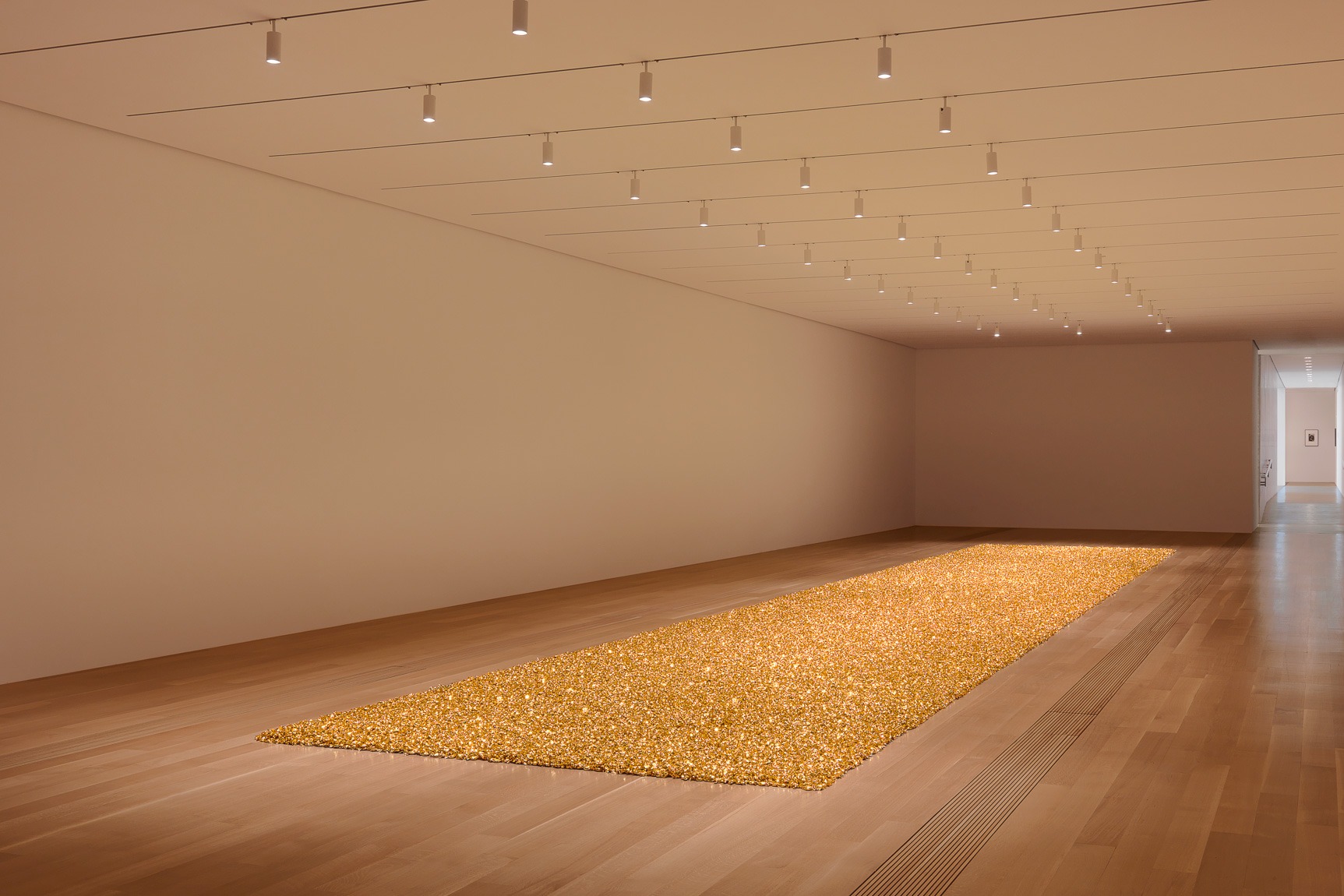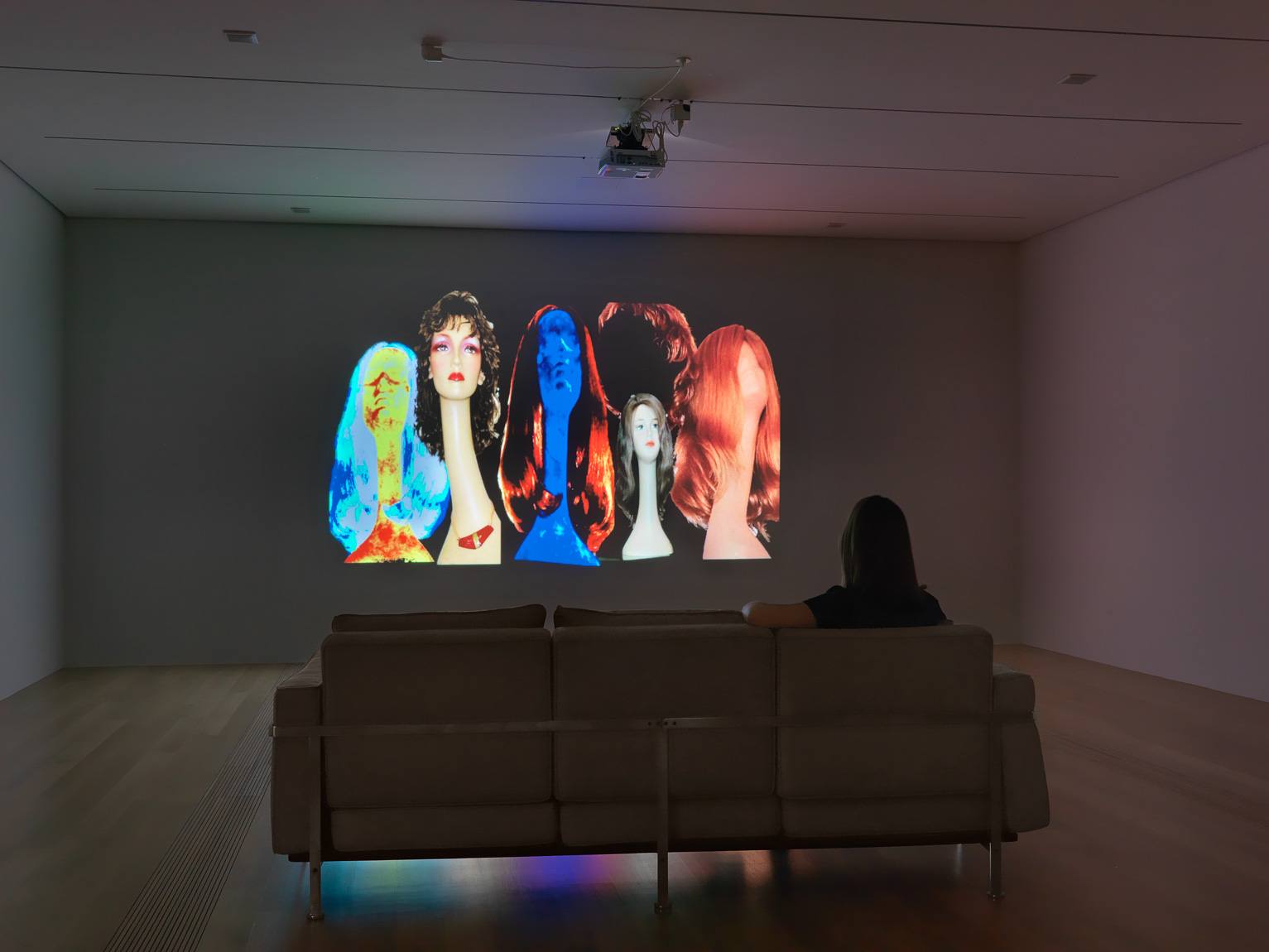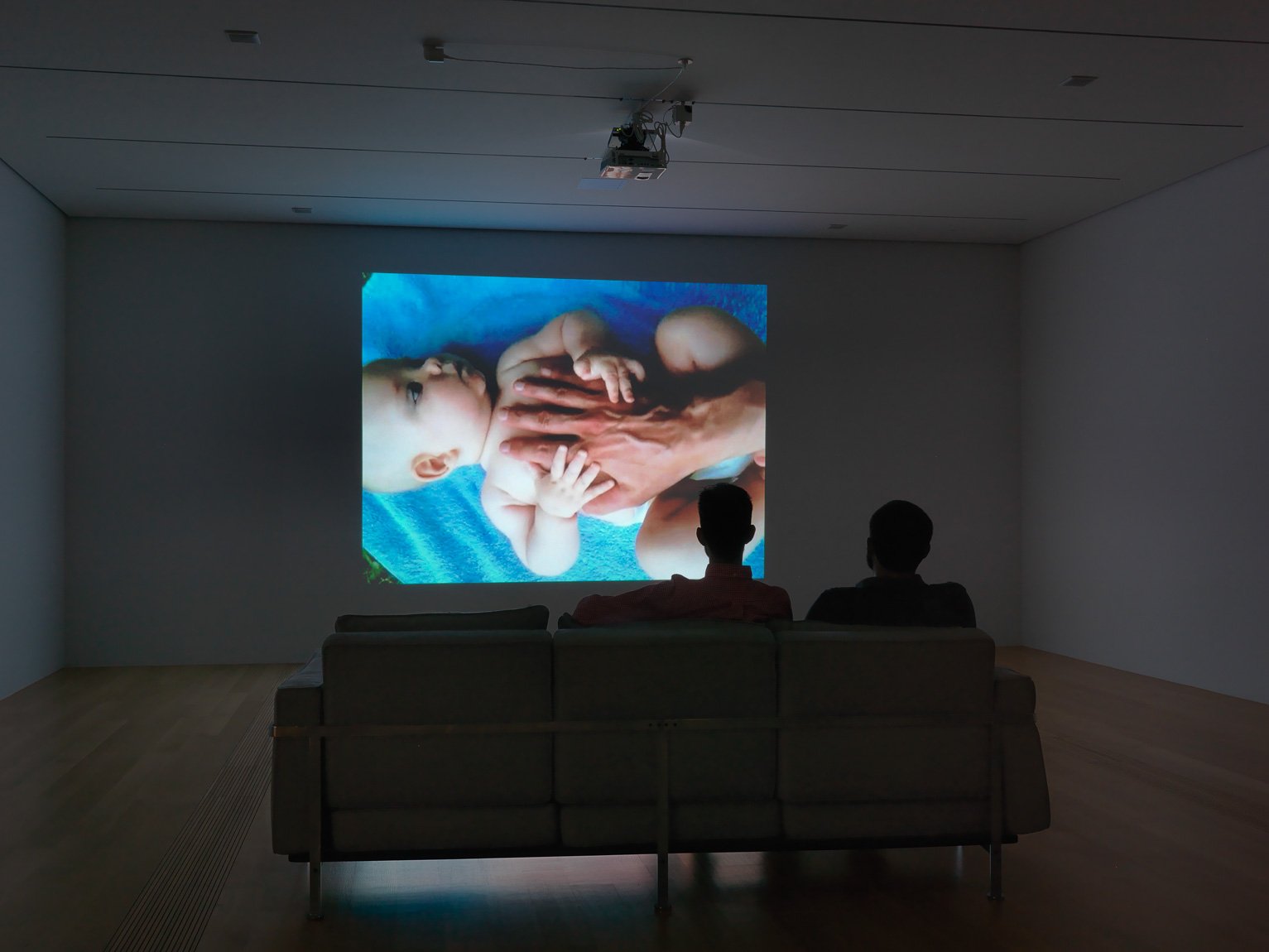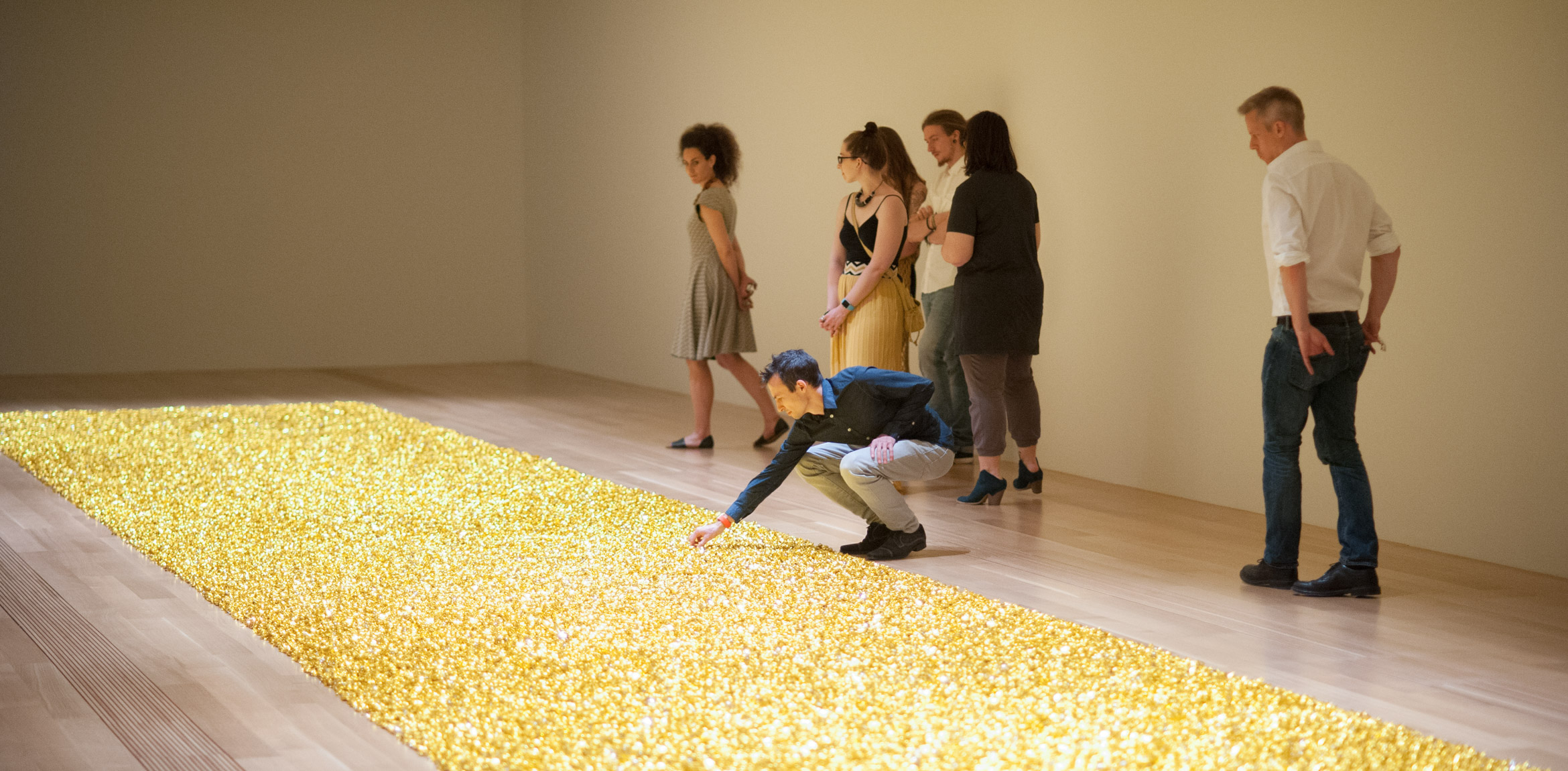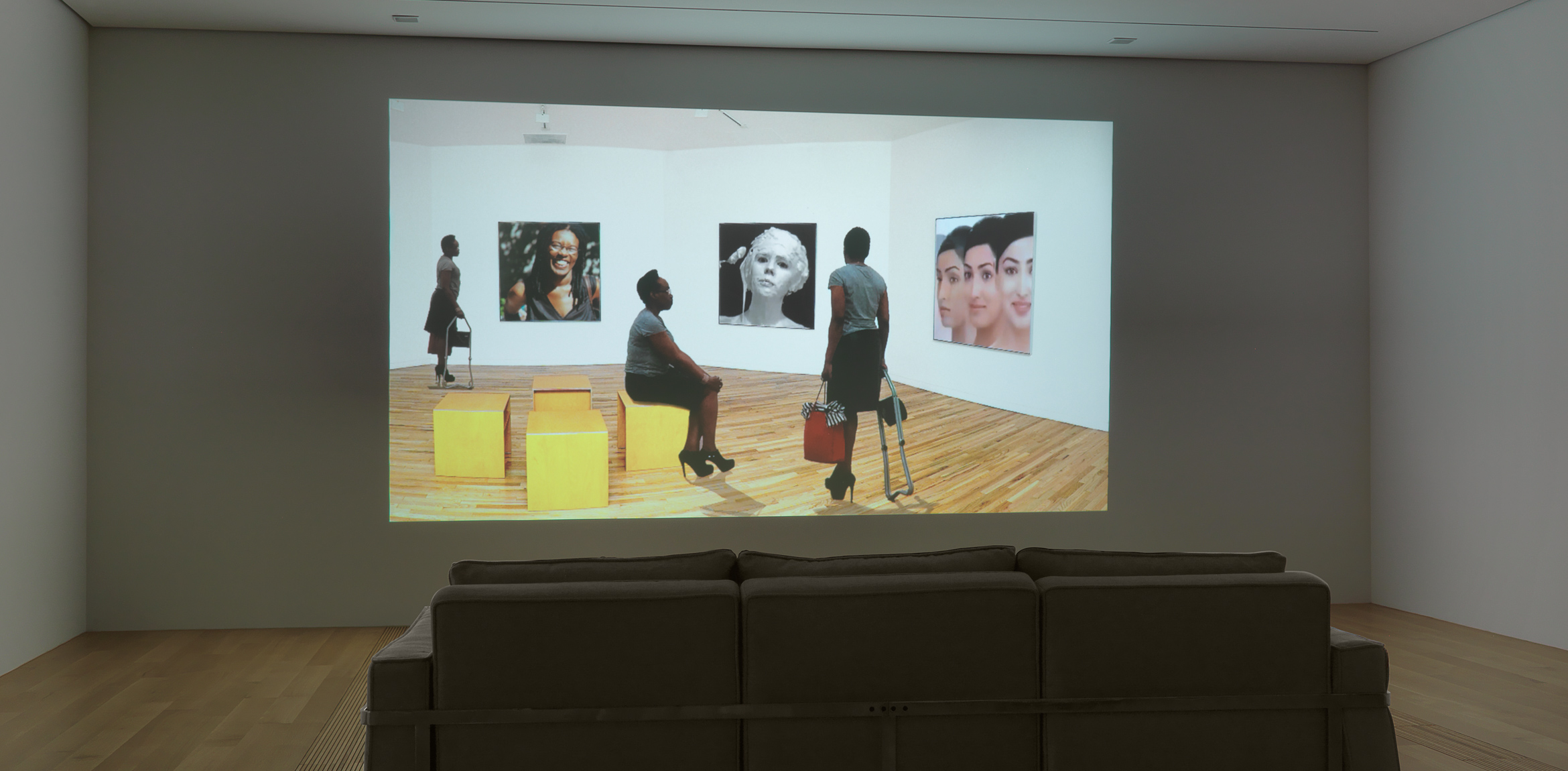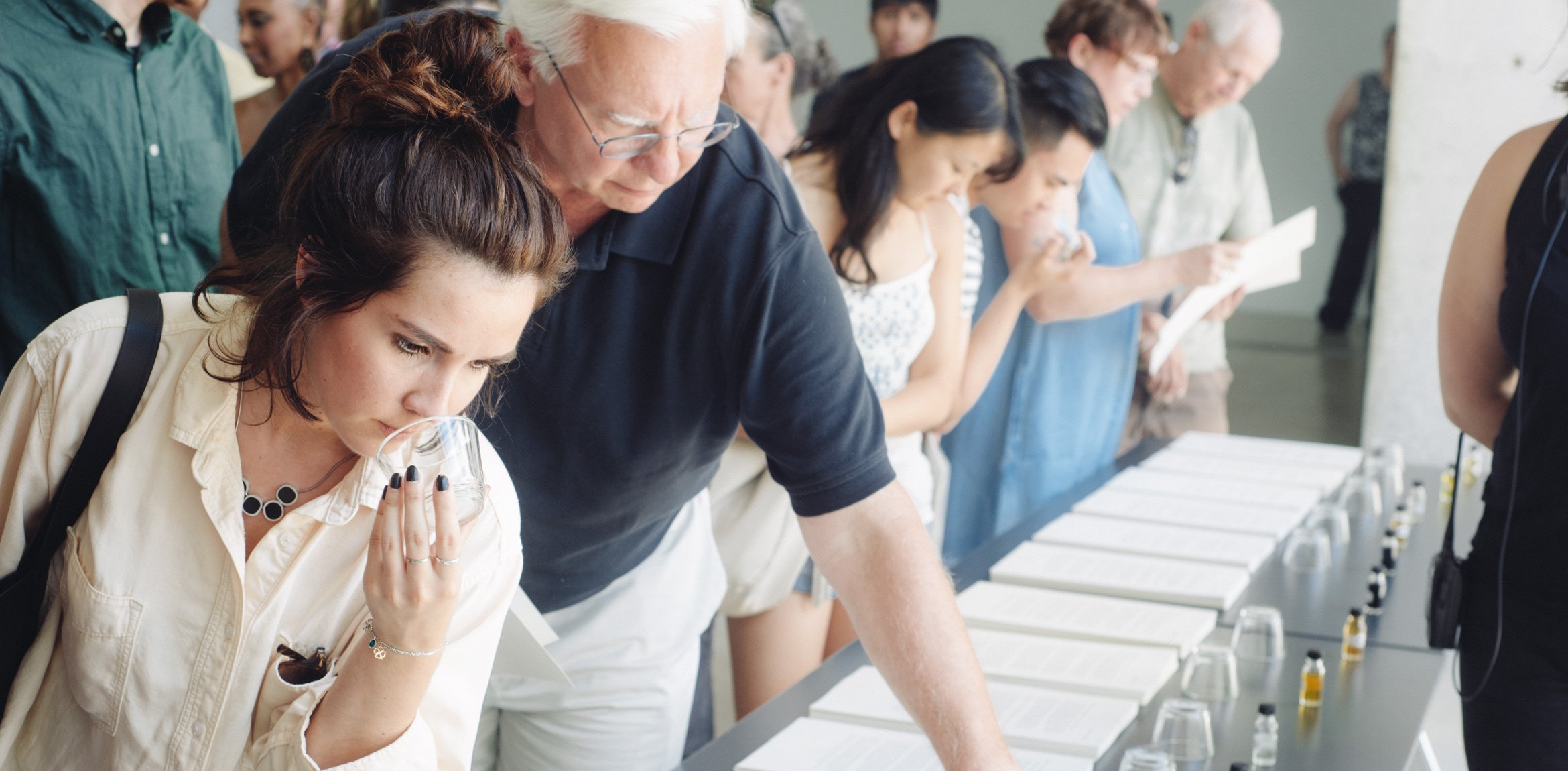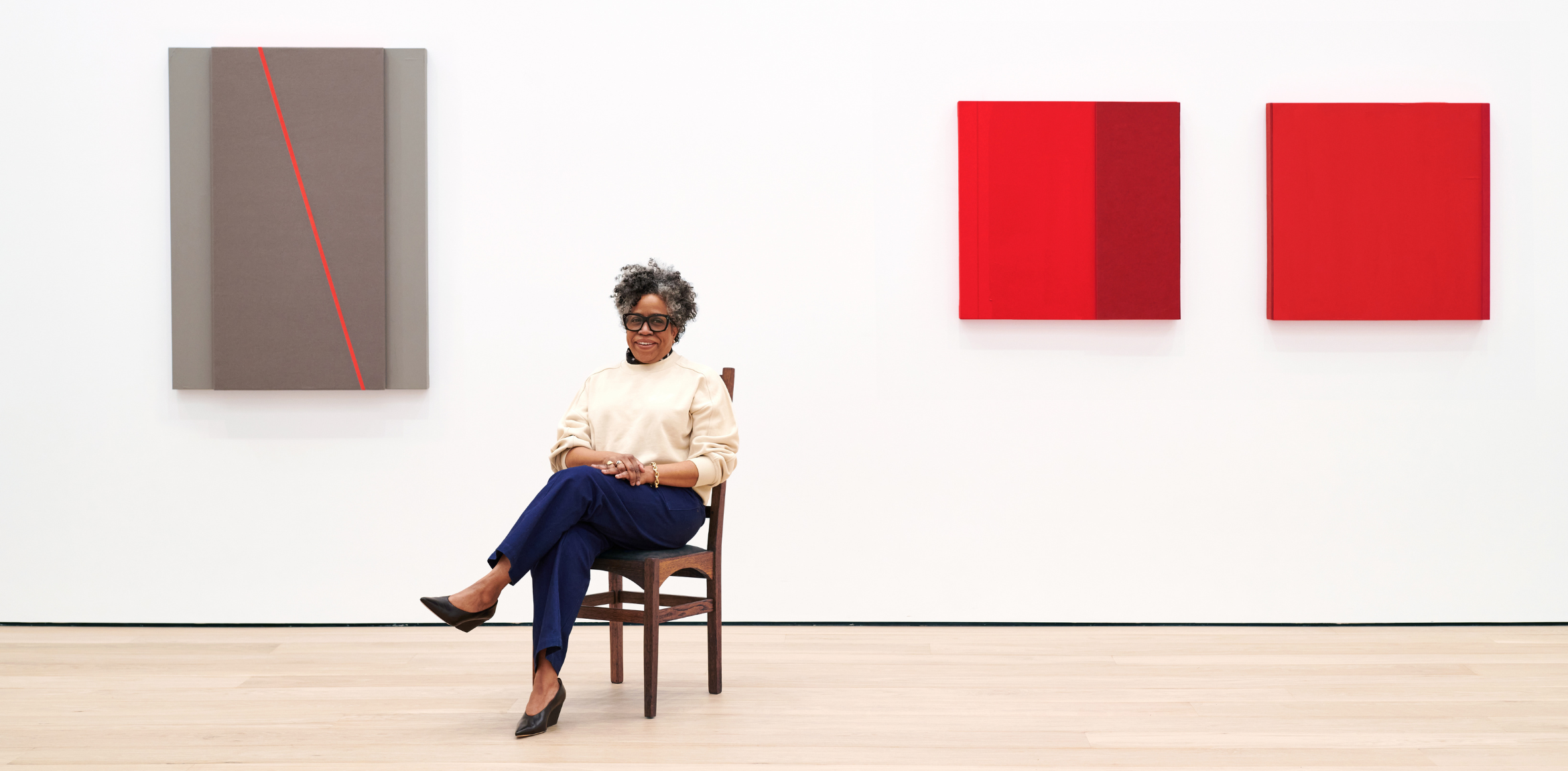Ellipsis invited visitors to listen, look, touch, taste, and pause—celebrating the senses and embracing a range of individual and collective experiences with art. The exhibition brought out unexpected variations in perception, interaction, and awareness, featuring works by Janet Cardiff, Felix Gonzalez-Torres, Odilon Redon, Roman Ondák, John Bresland, Thylias Moss, and the debut of a commissioned work by John Lucas and Claudia Rankine, in addition to a rotating selection of works by Doris Salcedo, Jean (Hans) Arp, Ellsworth Kelly, Richard Serra, Gedi Sibony, and Mark Rothko.
In the main gallery, Janet Cardiff’s The Forty Part Motet channeled the voices of forty choral singers into separate audio speakers; as listeners moved through the space, the shape of the music varied from individual voices to a polyphonic confluence of sound. Elsewhere, visitors were encouraged to have their names inscribed directly onto the gallery wall for Roman Ondák’s performance Clockwork, which retained the written memory of those who took part in it. Felix Gonzalez-Torres’s “Untitled” (Placebo-Landscape-for Roni) comprised hard candies to be removed and eaten, depleting and dispersing the work over time.
The role of single artworks within a larger series was considered through Odilon Redon’s lithographic portfolio In the Dream, and a rotation of works by Doris Salcedo, Jean (Hans) Arp, Ellsworth Kelly, Richard Serra, Gedi Sibony, and Mark Rothko offered variable experiences of the exhibition through a series of unique pairings. Ellipsis also featured a focused presentation of video poetry and essay that called attention to the human body in a variety of sociocultural contexts, with works by Thylias Moss and John Bresland, as well as the inaugural presentation of a video by John Lucas and Claudia Rankine. Like the grammatical mark that inspires its title, Ellipsis encouraged visitors to both draw connections and linger in the spaces between works, forging new relationships between art and its audiences.

